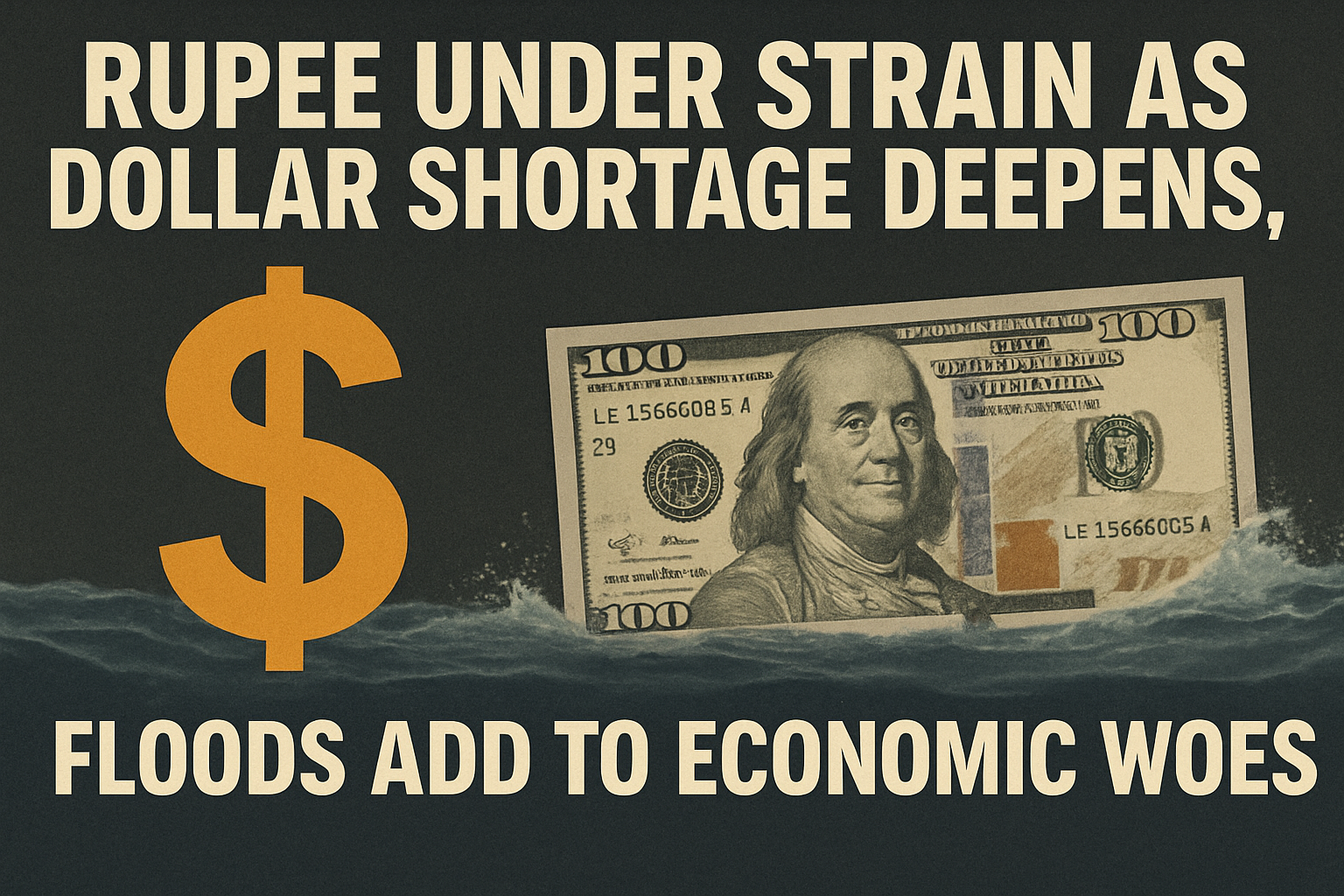Pakistan’s currency markets are under mounting stress as a sharp shortage of US dollars disrupts trade and fuels speculation, leaving the rupee vulnerable despite recent stabilizing measures. Exchange companies report growing difficulty in meeting demand, raising concerns about hoarding, smuggling, and widening distortions between official and open-market rates.
While the State Bank of Pakistan has introduced administrative interventions to support the rupee, experts caution these steps are only short-term fixes. The persistent imbalance between dollar demand and supply continues to pressure the currency, with parallel markets thriving in the gap left by limited availability.
The crisis has been exacerbated by devastating floods that swept across large parts of the country, disrupting agricultural exports, heightening import requirements, and placing fresh strain on Pakistan’s already fragile external accounts. Analysts warn that further shocks — including delays in international financial assistance, declining remittance inflows, or rising global commodity prices — could accelerate the rupee’s decline.
Importers, particularly in sectors dependent on raw materials, are struggling to open letters of credit, sparking fears of shortages in essential goods and renewed inflationary spikes. Businesses have urged the government to strengthen oversight of illicit dollar flows and provide a clearer policy roadmap to reassure markets.With Pakistan simultaneously battling high inflation, rising debt repayments, and costly disaster recovery, the rupee’s path forward hinges on the ability to secure foreign inflows, manage external financing, and restore confidence in the country’s economic management.


